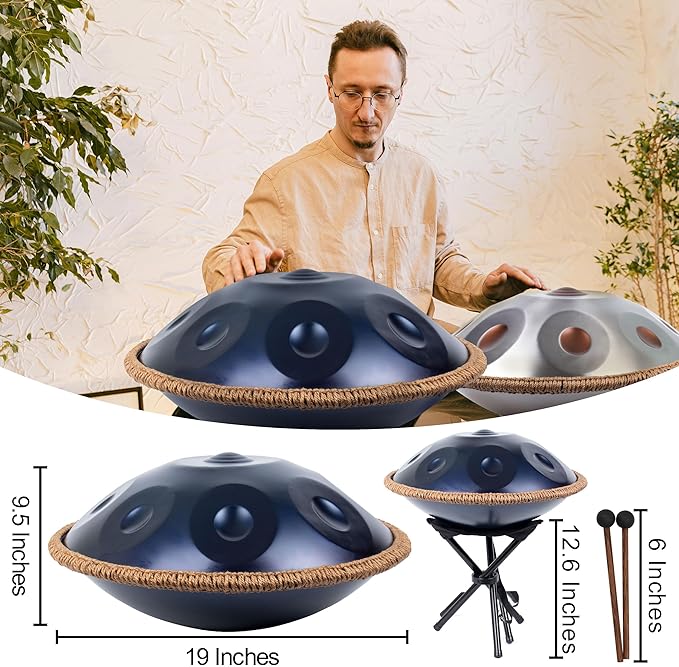1-Minute Handpan Intro: Zero Experience Needed to Create a Healing Sound

When a melodic and ethereal sound fills the air, you might see a metal instrument resembling a "flying saucer"—this is the handpan. Its sound is pure and full of healing power, able to immerse anyone instantly. Many are drawn to its charm, yet feel intimidated by its unique shape, thinking it's difficult to master.
In fact, the handpan is a very suitable instrument for beginners. It doesn't require complex music theory or strict sheet music; you can play entirely by feeling and intuition. This article will provide you with a detailed handpan beginner's guide to help you embark on this beautiful musical journey.
Step One: Getting to Know the Handpan—Its Basic Structure
Before you start playing, you need to understand the basic structure of the handpan:
-
The Center Note (Ding): Located at the center of the handpan, it's usually the lowest note in the scale. Its tone is rich and deep, serving as a frequently used main note.
-
The Note Fields (Notes): Surrounding the center note are "note fields" of different sizes and pitches, which form the handpan's specific scale. The handpan's unique feature is that all its notes are in harmony, making it difficult to produce a dissonant sound no matter how you play.
-
The Resonating Port (Gu): At the bottom of the handpan, there is an opening, which acts as its resonating chamber to enhance the tone and resonance.
Step Two: Preparation Before Playing—The Correct Posture
Proper posture will help you relax and make it easier to produce a beautiful sound.
-
Sitting Posture: Choose a comfortable sitting position. You can sit on a chair and place the handpan on your lap, or use a dedicated handpan stand. The most important thing is to ensure your arms and shoulders are relaxed.
-
Placement: Place the handpan securely on your lap or a stand, making sure the center note (Ding) is facing you for easy playing.
Step Three: Basic Handpan Playing Techniques
Playing the handpan is not as complex as playing the piano or guitar; it's more about "feel."
-
The Correct Striking Method: This is the most crucial step.
-
Use the fleshy pad of your finger, not the nail.
-
When striking, your finger should touch the note quickly and gently, like a raindrop on water, and then lift immediately.
-
Do not press down with force or maintain contact for a long time, as that will produce a dull, muted sound. A correct strike should be elastic, allowing your finger to bounce off like a spring.
-
-
Single Note Practice:
-
Start with the center note (Ding), gently tapping it with your index or middle finger to feel its vibration.
-
Then, one by one, tap each surrounding note to familiarize yourself with its location and tone. Maintain a steady rhythm and listen closely to the sound you're creating.
-
-
Combination Practice and Improvisation:
-
Once you're comfortable with single notes, you can try combining them. Start with two notes, perhaps playing two adjacent notes back and forth to form a simple melody.
-
The greatest fun of the handpan lies in improvisation. Try closing your eyes, feeling the connections between the notes, and playing intuitively. There's no need to chase a perfect musical score; just enjoy the fun of playing itself.
-
-
Dynamics and Rhythm:
-
Dynamics: Control the volume by changing the force of your strikes. A light tap produces a soft, ethereal sound, while a slightly stronger tap increases volume and resonance.
-
Rhythm: You can practice with a simple metronome or create your own rhythms. Try using different finger combinations to create more rhythmic variations.
-